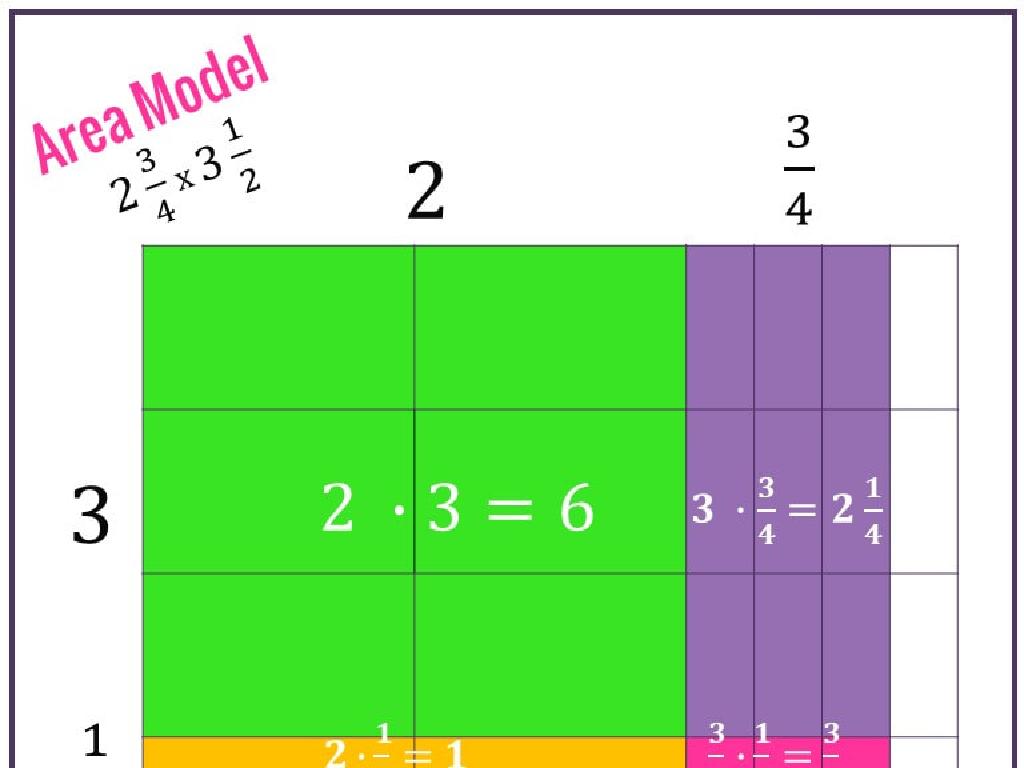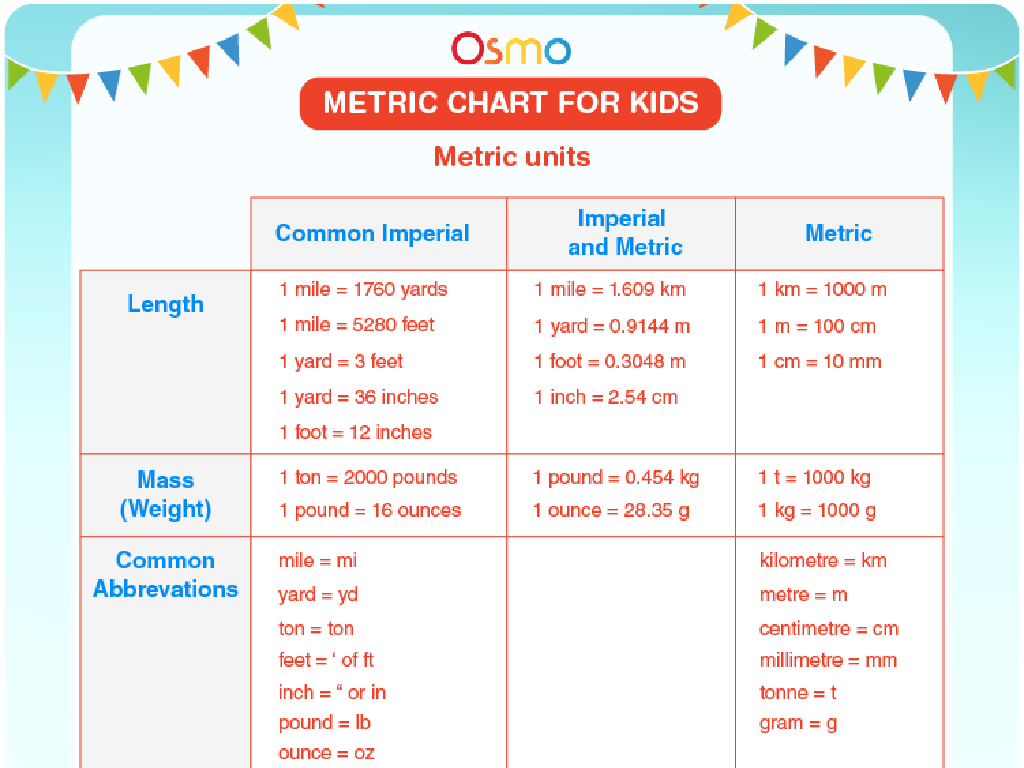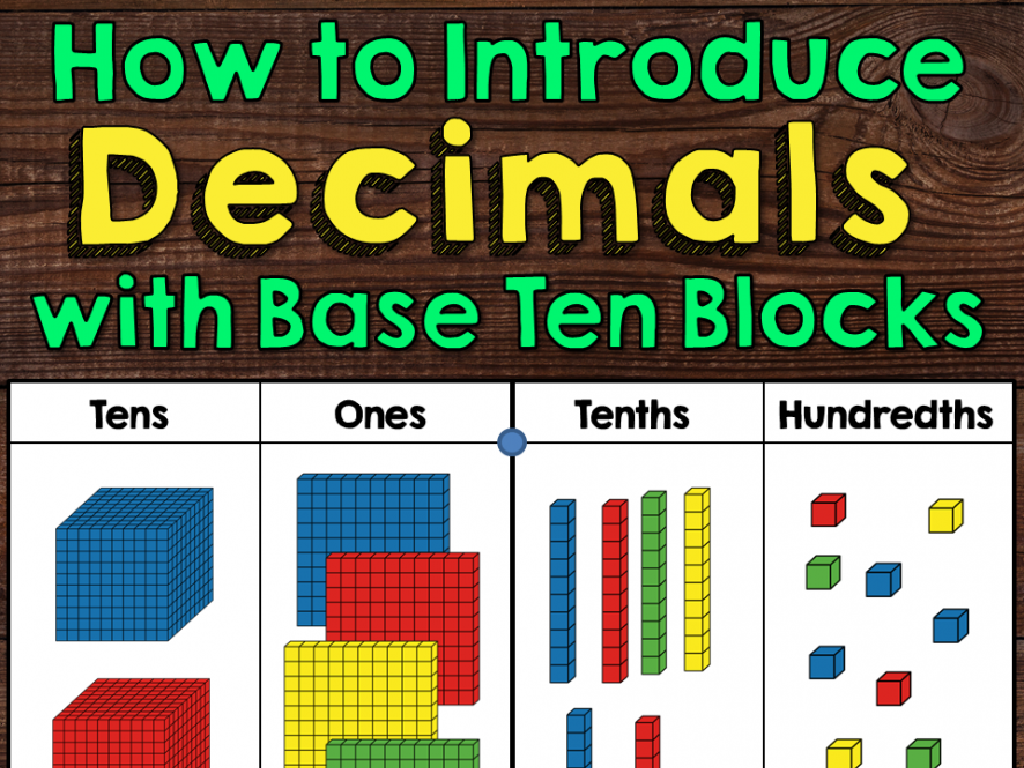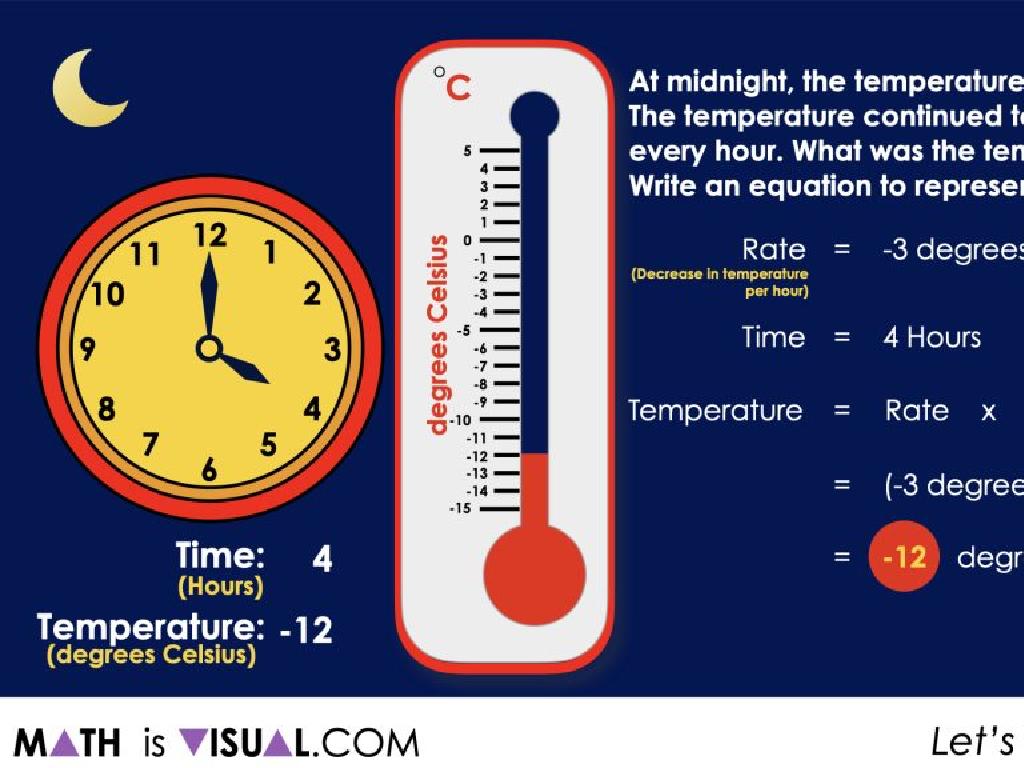Select Two-Dimensional Shapes
Subject: Math
Grade: First grade
Topic: Two-Dimensional Shapes
Summary: Introduce first graders to two-dimensional shapes with this engaging math lesson. Students will learn to identify circles, squares, triangles, and rectangles by exploring their properties and spotting real-life examples in the classroom. Through hands-on activities like sorting, drawing, and a shape hunt, children develop essential shape recognition and classification skills. This presentation encourages creativity and observation while building a strong foundation in geometry for young learners.
Please LOG IN to download the presentation. Access is available to registered users only.
View More Content
Welcome to Shapes!
– Greet the day and get ready for shapes
– Discover shapes in the world around us
– Shapes are everywhere! Like squares in windows and circles in clocks.
– Learn about two-dimensional shapes
– Flat shapes like paper cut-outs, not like boxes or balls.
– Understand length and width
– Length is how long something is, width is how wide.
|
Begin the class with a warm welcome and an introduction to the day’s topic: two-dimensional shapes. Explain that these shapes are flat, like drawings on a piece of paper, and they only have length and width, unlike three-dimensional objects that also have height. Use relatable examples from the classroom or home to illustrate two-dimensional shapes, such as the face of a clock (circle), a sheet of paper (rectangle), or a window (square). This will help students begin to recognize these shapes in their environment. Emphasize the terms ‘length’ and ‘width’ with simple gestures to show one side longer than the other, making it interactive and engaging for first graders.
Exploring Two-Dimensional Shapes
– 2D shapes are flat shapes
– Like a drawing on paper, they don’t puff out
– Made of lines and curves
– Straight lines make squares, curves make circles
– Examples: circle, square
– A circle is round, no corners
– More examples: triangle, rectangle
– Triangles have 3 sides, rectangles have 4
|
This slide introduces first graders to the concept of two-dimensional shapes. Emphasize that 2D shapes are flat, like drawings on a piece of paper, and they do not have any thickness. Explain that these shapes are everywhere in our environment and can be made up of straight lines, like squares and rectangles, or curves, like circles. Use simple language to describe each shape: a circle is round and has no corners; a square has four equal sides and four corners; a triangle has three sides and three corners; a rectangle is like an elongated square with four sides and four corners, but opposite sides are equal. Encourage students to find and draw examples of these shapes as a class activity.
Meet the Circle
– A circle is perfectly round
– Circles have no corners or edges
– Circle-shaped objects in everyday life
– Examples: coins, clocks, and buttons
– Thinking of circle examples
– Can you find circle objects at home?
|
This slide introduces the circle to first graders, emphasizing its round shape and lack of corners. Encourage students to observe their surroundings and identify objects that are circular, like coins, clocks, and buttons. This will help them relate the concept to real life and understand that shapes are everywhere around us. Ask them to bring or draw examples of circular objects for the next class to reinforce their learning and make the concept more tangible.
Meet the Square
– A square has four equal sides
– Four corners in every square
– Corners are called angles
– An angle is where two sides meet
– Angles make the square shape
– All angles in a square are the same
|
This slide introduces the basic properties of a square to first-grade students. Emphasize that all sides of a square are the same length, which makes it special. Show them how to identify a square by counting the sides and corners. Explain that the place where two sides meet is called an angle, and a square has four of these. Use real-life examples like a checkerboard or a windowpane to help them recognize squares in their environment. Encourage the students to draw their own squares and to find objects around the classroom or at home that have a square shape.
Meet the Triangle
– A triangle has three sides
– It also has three corners
– Triangles vary in appearance
– Like people, triangles can ‘look’ different
– Some have sides all the same length
– Equilateral triangles have all sides equal
|
This slide introduces the basic concept of a triangle to first-grade students. Emphasize that a triangle is a shape with three straight sides and three corners, also known as vertices. Show them that triangles can have different looks; for example, some triangles have all sides the same length, and others have sides of different lengths. Use simple language and real-life examples, such as a slice of pizza or a yield traffic sign, to help them identify triangles in their environment. Encourage the students to draw different triangles and discuss how changing the length of sides changes the shape of the triangle.
Meet the Rectangle
– A rectangle has four sides
– Like a square, but with a twist!
– Two sides are longer
– The longer sides are opposite each other
– Rectangles have four corners
– Where the sides meet, we have corners
– It looks like a stretched square
|
This slide introduces the rectangle to first-grade students. Emphasize that while a rectangle is similar to a square in having four sides and four corners, the key difference is that a rectangle has two longer sides. These longer sides are always opposite each other. Use visual aids to show the difference between a square and a rectangle. Encourage students to think of objects around them that have a rectangular shape, like a door or a book, to help them identify rectangles in the real world. This will help them understand the concept of two-dimensional shapes in a fun and relatable way.
Finding Shapes Around Us
– Search for shapes in the classroom
– Find objects shaped like rectangles
– Books, doors, or tables could be rectangles
– Spot items with a circular shape
– Clocks or plates might be circles
– Discuss the shapes we find
|
This slide is meant to engage students in a practical activity to identify two-dimensional shapes in their immediate environment. Encourage the students to look around the classroom and find real-life examples of rectangles and circles. This activity helps them to connect the abstract concept of shapes with tangible items they use or see every day. It’s a fun way for them to apply their knowledge and reinforces shape recognition. As they find objects, discuss why the object represents a particular shape, focusing on the number of sides and the length of sides for rectangles, and the round edge for circles. This will also enhance their observational skills and their ability to classify objects based on geometric properties.
Shape Sorting Activity
– Let’s play a sorting game!
– I’ll give you cut-out shapes
– Sort shapes into groups
– Use sides and corners as clues
– For example, triangles have 3 sides and 3 corners
|
This activity is designed to help first graders recognize and categorize two-dimensional shapes. Provide a variety of cut-out shapes such as circles, squares, rectangles, and triangles. Encourage the students to observe and discuss the number of sides and corners each shape has. Guide them to sort the shapes into groups based on these attributes. For instance, all triangles should be in one group because they have three sides and three corners. This hands-on activity will reinforce their understanding of geometric shapes and their properties. Prepare to assist students who may have difficulty and offer praise as they successfully sort the shapes.
Draw Your Favorite Shape
– It’s time to draw!
– Choose your favorite 2D shape
– Could be a square, circle, triangle…
– Draw it on your paper
– Show your drawing when finished
– I can’t wait to see your shapes!
|
This slide is for a fun and interactive class activity where first graders are encouraged to think about and draw their favorite two-dimensional shape. It’s a great way to get them engaged with the concept of shapes in a personal and creative way. Provide them with examples of two-dimensional shapes like squares, circles, and triangles to inspire their choices. Once they have drawn their shape, ask them to hold up their drawings and share with the class. This activity not only reinforces their understanding of shapes but also allows them to express their preferences and practice their drawing skills.
Class Activity: Shape Hunt
– Explore the classroom on a shape hunt
– Match objects to learned shapes
– List all shape-matching objects
– Team up with a buddy for the hunt
|
This activity is designed to reinforce the students’ understanding of two-dimensional shapes by identifying them in their immediate environment. Encourage the children to work in pairs to foster teamwork and collaborative learning. Provide them with a list of shapes they’ve learned, such as circles, squares, triangles, and rectangles, and ask them to find objects around the classroom that match these shapes. They should write down the objects they find next to the corresponding shape on their list. This hands-on activity not only makes learning fun but also helps students recognize and categorize shapes in the world around them. As a teacher, be prepared to guide them and ensure each pair has a chance to share their findings with the class.





